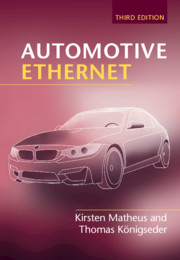Refine search
Actions for selected content:
48585 results in Computer Science
3 - How My BrainWorks
-
- Book:
- Hey Cyba
- Published online:
- 26 March 2021
- Print publication:
- 08 April 2021, pp 20-45
-
- Chapter
- Export citation
2 - Technology, regulation and theory
-
- Book:
- Technology Law
- Published online:
- 21 April 2021
- Print publication:
- 08 April 2021, pp 14-36
-
- Chapter
- Export citation
TRANSLATIONS BETWEEN LINEAR AND TREE NATURAL DEDUCTION SYSTEMS FOR RELEVANT LOGICS
- Part of
-
- Journal:
- The Review of Symbolic Logic / Volume 14 / Issue 2 / June 2021
- Published online by Cambridge University Press:
- 08 April 2021, pp. 285-306
- Print publication:
- June 2021
-
- Article
- Export citation
Index
-
- Book:
- Hey Cyba
- Published online:
- 26 March 2021
- Print publication:
- 08 April 2021, pp 231-244
-
- Chapter
- Export citation
6 - Law, technology and the criminal justice system
-
- Book:
- Technology Law
- Published online:
- 21 April 2021
- Print publication:
- 08 April 2021, pp 111-139
-
- Chapter
- Export citation
9 - How Do You Say That In . . . ?
-
- Book:
- Hey Cyba
- Published online:
- 26 March 2021
- Print publication:
- 08 April 2021, pp 136-151
-
- Chapter
- Export citation
10 - Let’s Chat
-
- Book:
- Hey Cyba
- Published online:
- 26 March 2021
- Print publication:
- 08 April 2021, pp 152-164
-
- Chapter
- Export citation
6 - What Does That Mean?
-
- Book:
- Hey Cyba
- Published online:
- 26 March 2021
- Print publication:
- 08 April 2021, pp 82-103
-
- Chapter
- Export citation
5 - Sample Complexity Bounds for Dictionary Learning from Vector- and Tensor-Valued Data
-
-
- Book:
- Information-Theoretic Methods in Data Science
- Published online:
- 22 March 2021
- Print publication:
- 08 April 2021, pp 134-162
-
- Chapter
- Export citation
4 - Law, technology and healthcare
-
- Book:
- Technology Law
- Published online:
- 21 April 2021
- Print publication:
- 08 April 2021, pp 64-92
-
- Chapter
- Export citation
Contributors
-
- Book:
- Information-Theoretic Methods in Data Science
- Published online:
- 22 March 2021
- Print publication:
- 08 April 2021, pp xix-xxii
-
- Chapter
- Export citation
8 - Computing Choice: Learning Distributions over Permutations
-
-
- Book:
- Information-Theoretic Methods in Data Science
- Published online:
- 22 March 2021
- Print publication:
- 08 April 2021, pp 229-262
-
- Chapter
- Export citation
ROB volume 39 issue 5 Cover and Back matter
-
- Article
-
- You have access
- Export citation
Safe option-critic: learning safety in the option-critic architecture
- Part of
-
- Journal:
- The Knowledge Engineering Review / Volume 36 / 2021
- Published online by Cambridge University Press:
- 07 April 2021, e4
-
- Article
- Export citation
ROB volume 39 issue 5 Cover and Front matter
-
- Article
-
- You have access
- Export citation

Automotive Ethernet
-
- Published online:
- 06 April 2021
- Print publication:
- 22 April 2021
On the size-Ramsey number of grid graphs
- Part of
-
- Journal:
- Combinatorics, Probability and Computing / Volume 30 / Issue 5 / September 2021
- Published online by Cambridge University Press:
- 06 April 2021, pp. 670-685
-
- Article
- Export citation
Cubical Agda: A dependently typed programming language with univalence and higher inductive types
- Part of
-
- Journal:
- Journal of Functional Programming / Volume 31 / 2021
- Published online by Cambridge University Press:
- 06 April 2021, e8
-
- Article
-
- You have access
- Export citation
